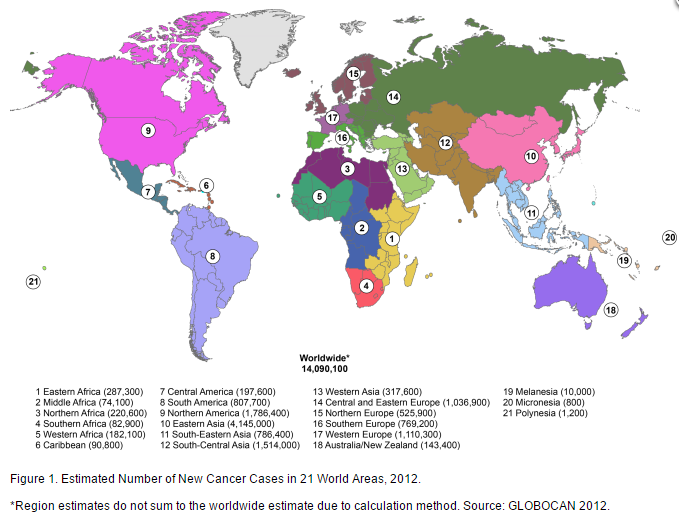
Cancer Rates Declining in Rich Countries, But Rising in Poorer Ones: Study
The global burden of cancer is shifting dramatically. The occurrence of cancer is increasing because of the growth and aging of the population, as well as an increasing prevalence of established risk factors such as smoking, overweight, physical inactivity, and changing reproductive patterns associated with urbanization and economic development.

Improved screening and early-detection efforts, combined with lifestyle changes have helped to reduce the prevalence of common cancers in many high-income countries, plus a decrease in risk factors such as smoking, probably explain part of the positive trend among the high-income countries. But low- and middle-income countries are seeing those rates rise as they adopt unhealthy Western habits, according to a study published in Cancer Epidemiology, Biomarkers & Prevention, a journal of the American Association for Cancer Research.
Based on GLOBOCAN estimates, about 14.1 million new cancer cases were diagnosed and 8.2 million deaths occurred in 2012 worldwide. Over the years, the burden has shifted to less developed countries, which currently account for about 57% of cases and 65% of cancer deaths worldwide. The number of cancer cases and deaths are expected to grow rapidly as populations increase, get older and adopt lifestyles that raise the risk for cancer, researchers report.
Estimated Number of New Cancer Cases in 21 World Areas, 2012

“It’s not surprising that the highest rates of cancer are still in high-income countries,” said study author Lindsey Torre, an epidemiologist at the American Cancer Society. The highest cancer rates are for colorectal, lung and breast cancer, which are related to lifestyle factors such as smoking and obesity, she said.
“But what’s interesting is that in low- and middle-income countries, we are starting to see rising rates of the same cancers that have been common in high-income countries because of the uptake of Western lifestyles, like smoking and excess body weight,” Torre said. “People are less active. There is less manual labor and more use of transport. They have access to perhaps more appealing but less healthy foods.”
As countries get wealthier, people tend to smoke more, eat more junk food and be less physically active, thus increasing the likelihood of certain cancers associated with these changes. For the most part, these countries are in South America, Africa and Asia, Torre said.
Among males, prostate cancer is the most commonly diagnosed cancer in most countries, with the exception of those in Eastern Europe where lung cancer is the No. 1 cancer. Among females, breast cancer is the most common among those in North America, Europe, and Oceania. There’s more diversity in Asia, where lung cancer ranks first in China and North Korea, liver in Laos and Mongolia, and thyroid in South Korea.
“In this context, it is both tragic and unconscionable that risk factors for cancer and other chronic diseases are being actively exported by wealthy countries to developing countries,” Dr. David Katz, director of the Yale University Prevention Research Center and president of the American College of Lifestyle Medicine, said.